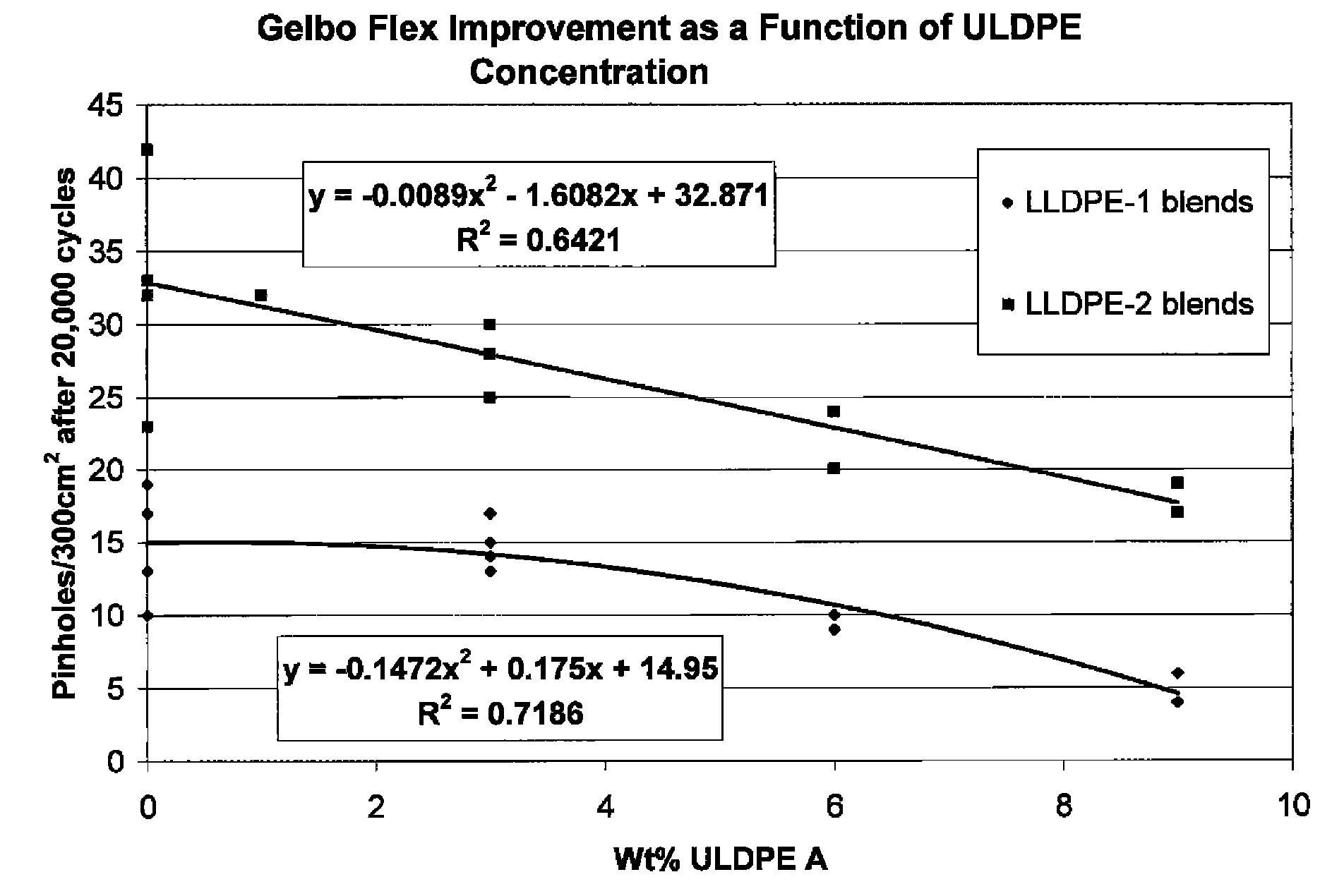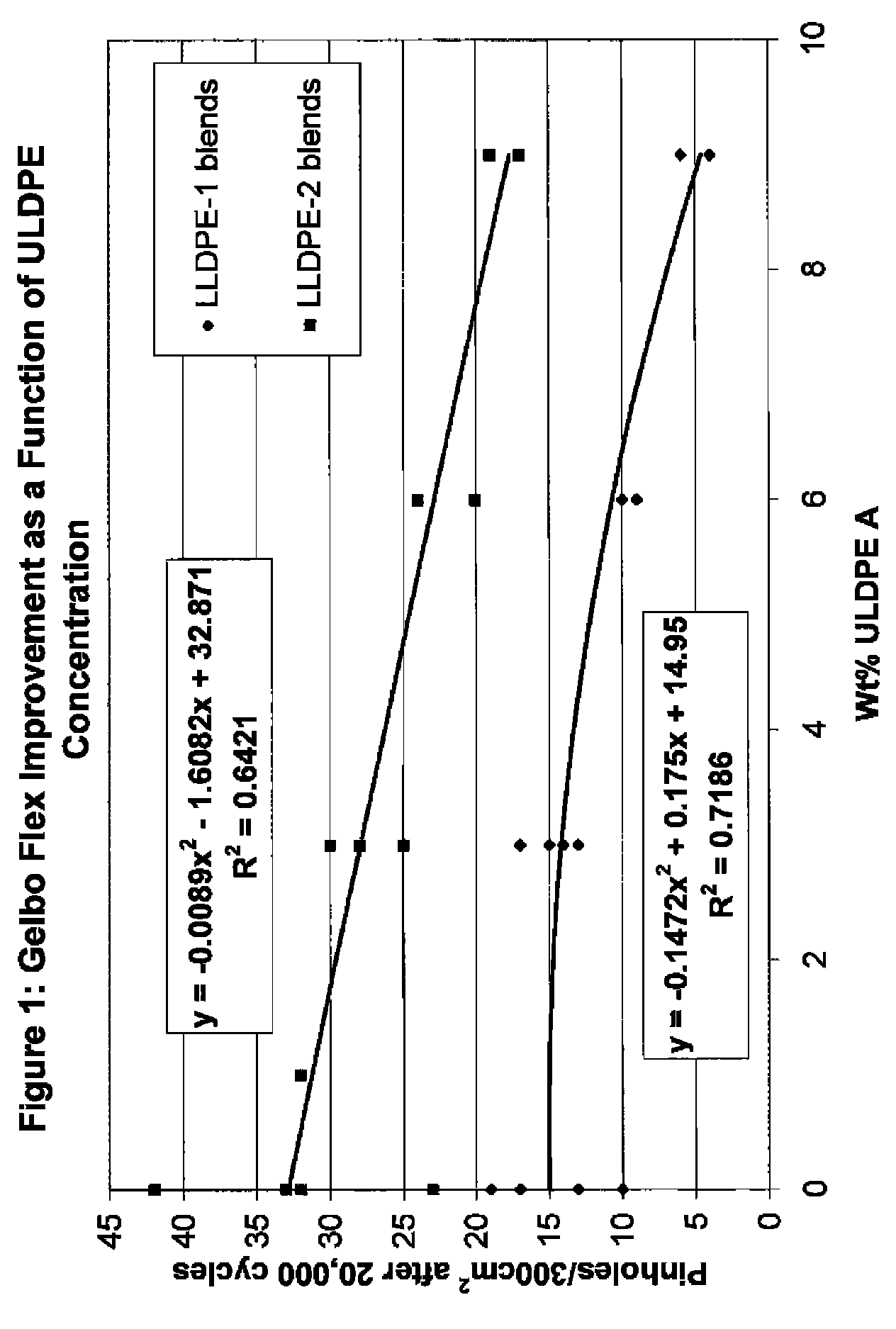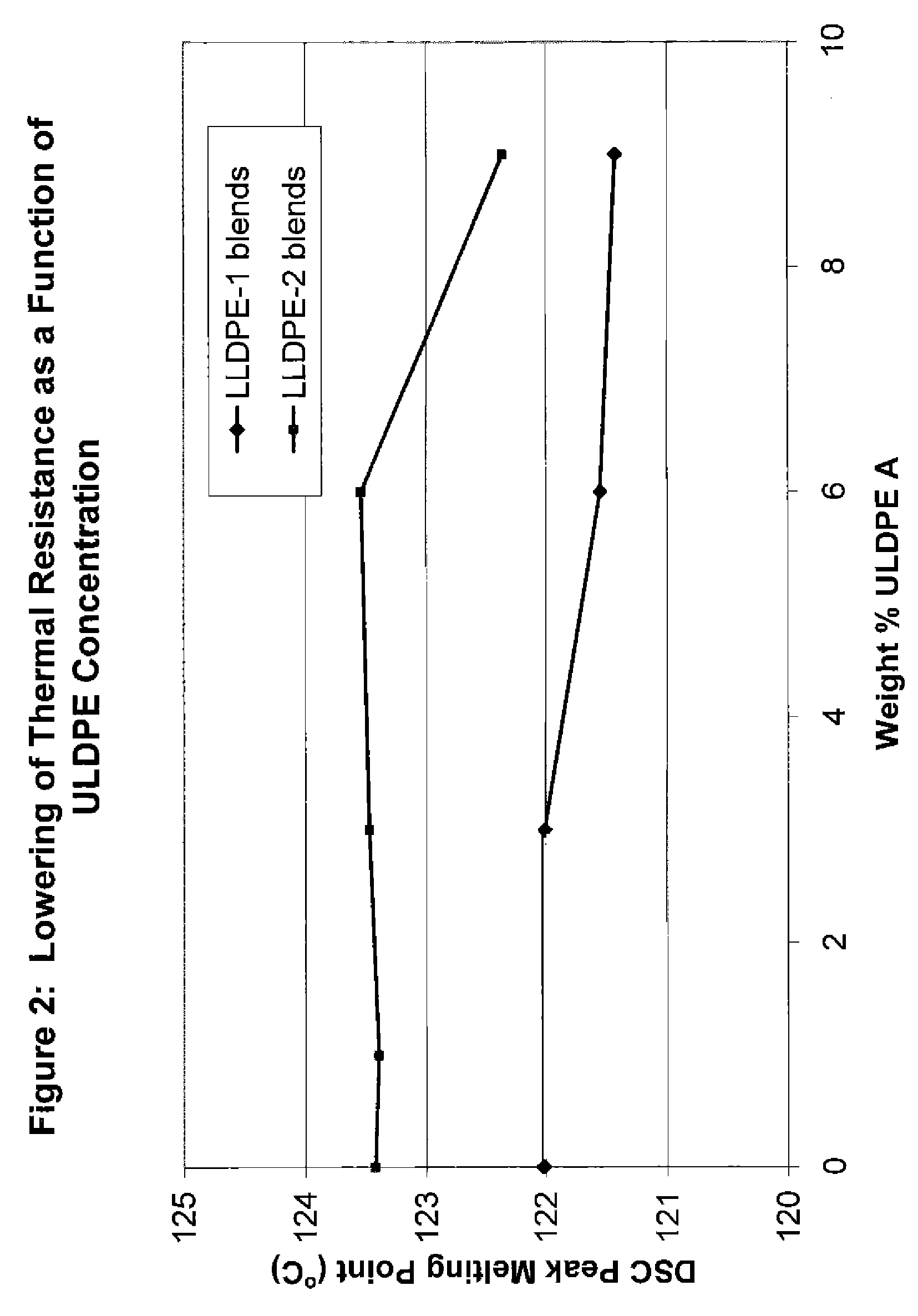Flex crack resistant low density polyethylene films
a low-density polyethylene and flex crack technology, applied in the field of films, can solve the problems of not addressing the problem of flex cracking and prior art provides little direction on how to control or eliminate flex crack in films, and achieve the effect of good flex crack performance and little negative impact on thermal resistance and stiffness of films
- Summary
- Abstract
- Description
- Claims
- Application Information
AI Technical Summary
Benefits of technology
Problems solved by technology
Method used
Image
Examples
example 1
[0073]The overall test results for the Control films are compared with those of the example films containing 9 weight % of a suitable extremely low density ULDPE resin. It can be seen in Table 5 that the example films consistently improved the pinhole resistance of a polyethylene film, while maintaining temperature resistance and stiffness.
[0074]
TABLE 5OVERALL SUMMARY OF RESULTSDSCMachinePeakDirectionAverage Number ofMeltingTensileGelbo Flex PinholesPointModulusSample(10,000c)(15,000c)(20,000c)(° C.)(psi)Control Film 111.515.515122.0229737Example Film 1.9A5.05.55121.4223582Example Film 1.9B3.53.57.8121.3523261Counter Example Film 1.30D6.59.515120.4022401Control Film 24533123.4236679Example Film 2.9A2518122.3627964Control Film 345109.1323722Example Film 3.9A30108.7621588Control Film 434108.5626646Example Film 4.9A12.5108.8422304Control Film 550.5130.8083851Counter Example Film 5.9A44.5130.0461571Control Film 670.5134.5595855Counter Example Film 6.9A61.5134.2178064
example 2
[0075]These results indicate that the addition of less than 2 weight % of the extremely low density ULDPE component of the invention is ineffective in improving the flex crack resistance of the low density polyethylene film. Adding more than 9.5 wt % of the extremely low density ULDPE component has a significant deleterious effect on both the thermal resistance and stiffness of the low density polyethylene film. In addition, it becomes difficult to incorporate larger amounts of such an extremely low melting polymer into low density polyethylenes, of density 0.915-0.935 g / cc, using normal manufacturing equipment without experiencing premature melting of the pellets, which can result in extruder feedthroat bridging and other temperature-related problems.
[0076]Table 6 and FIGS. 1 to 3 will be used to illustrate how the novel blending technique can be used to select the concentration of the extremely low density ULDPE component to measurably improve flex crack performance of a low densi...
example 3
[0084]This example illustrates how the novel approach of the present invention of blending a minimal amount of ULDPE, which satisfies the extremely low density criterion, into a LLDPE improves flex crack resistance more effectively than the conventional approach of blending a larger amount of a higher density ULDPE into the same LLDPE. Comparison of Example Films 1.9A and 1.9B to Counter Example Film 1.30C in Table 5, shows that both example films result in measurably fewer Gelbo flex pinholes than the counter example film, when flexed for 10,000, 15,000 or 20,000 cycles.
[0085]FIG. 4 is a visual depiction showing that very low concentrations of extremely low density ULDPEs are more effective in improving the flex crack resistance of a LLDPE film than higher concentrations of a higher density ULDPE.
[0086]The better flex crack resistance of films of the invention cannot simply be a molecular weight effect because ULDPE-A of the invention, Engage™ 8200, is actually higher in Melt Index...
PUM
| Property | Measurement | Unit |
|---|---|---|
| melt index | aaaaa | aaaaa |
| density | aaaaa | aaaaa |
| melt index | aaaaa | aaaaa |
Abstract
Description
Claims
Application Information
 Login to View More
Login to View More - R&D
- Intellectual Property
- Life Sciences
- Materials
- Tech Scout
- Unparalleled Data Quality
- Higher Quality Content
- 60% Fewer Hallucinations
Browse by: Latest US Patents, China's latest patents, Technical Efficacy Thesaurus, Application Domain, Technology Topic, Popular Technical Reports.
© 2025 PatSnap. All rights reserved.Legal|Privacy policy|Modern Slavery Act Transparency Statement|Sitemap|About US| Contact US: help@patsnap.com



